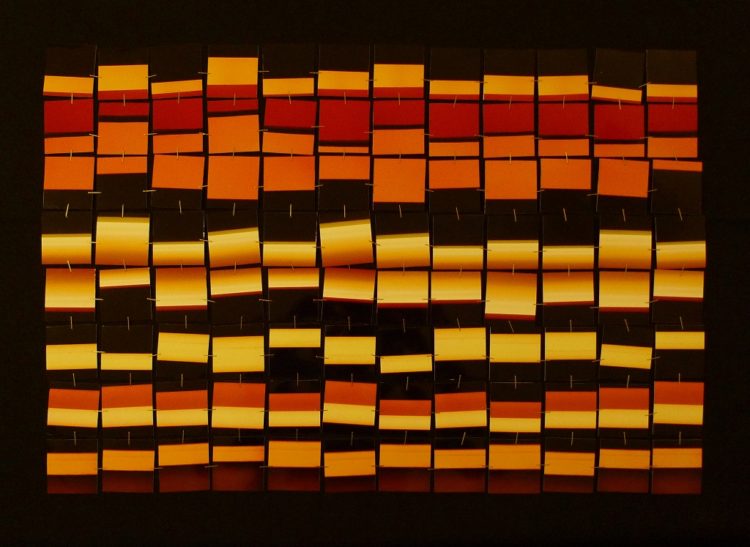
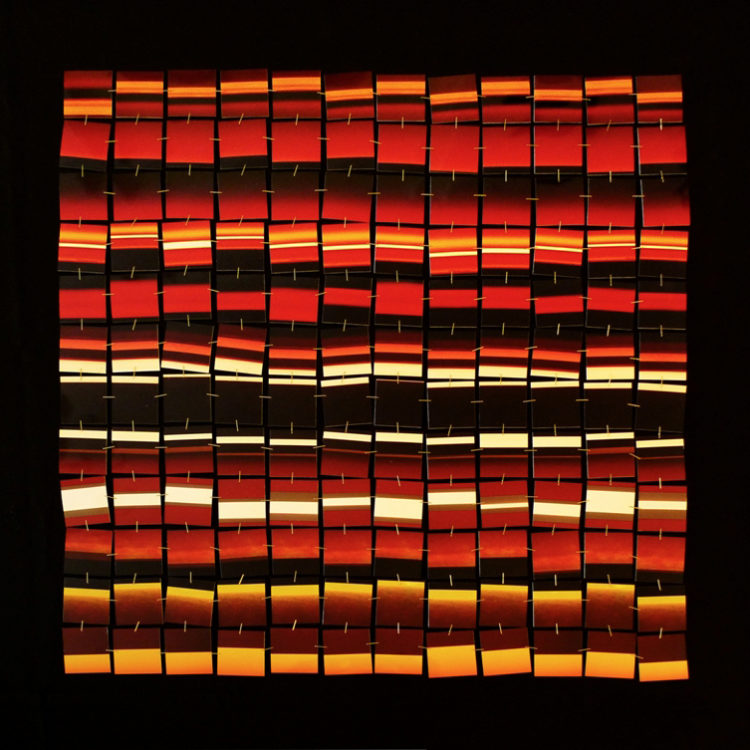
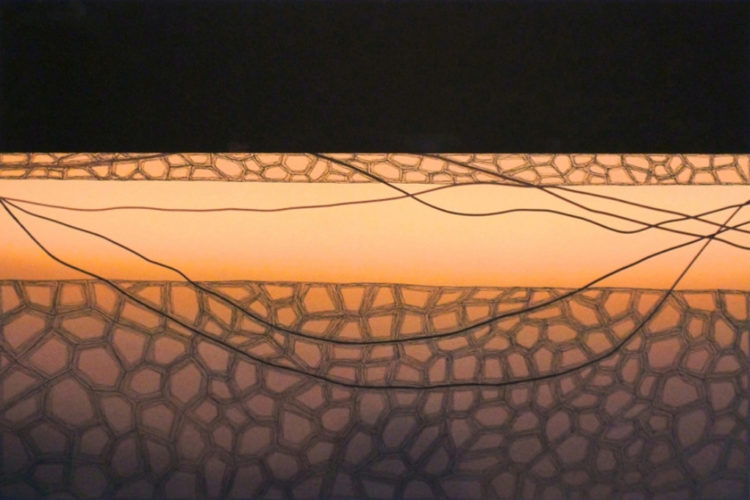
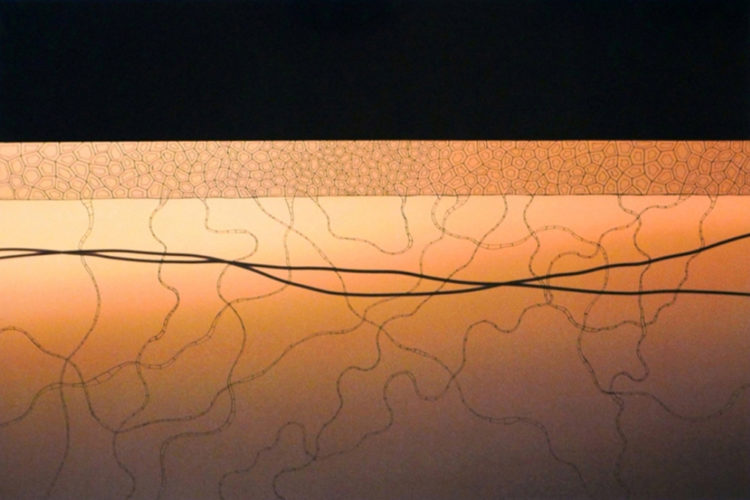
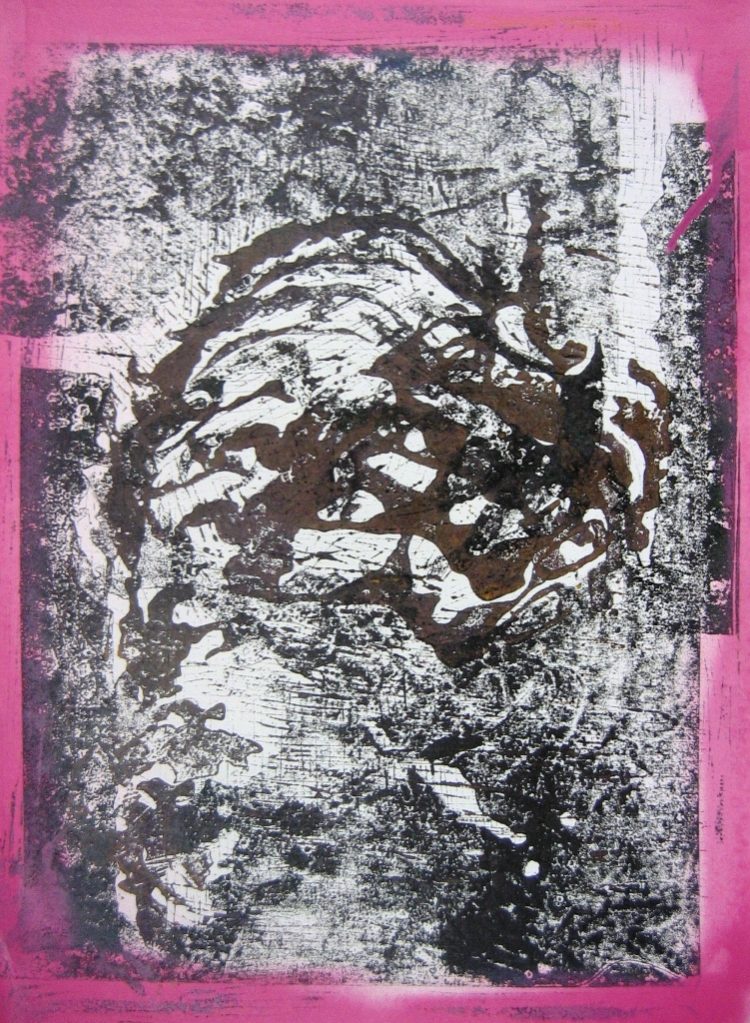

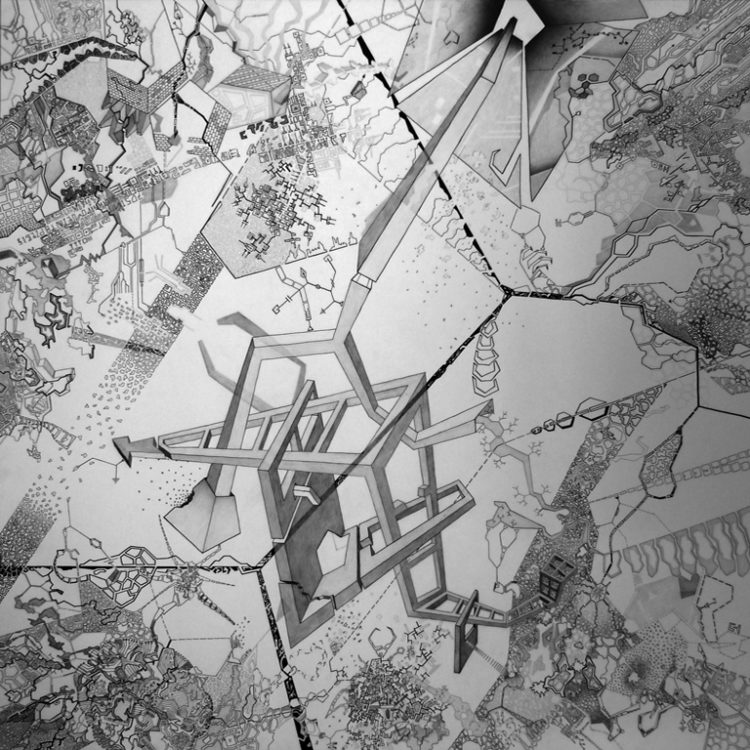
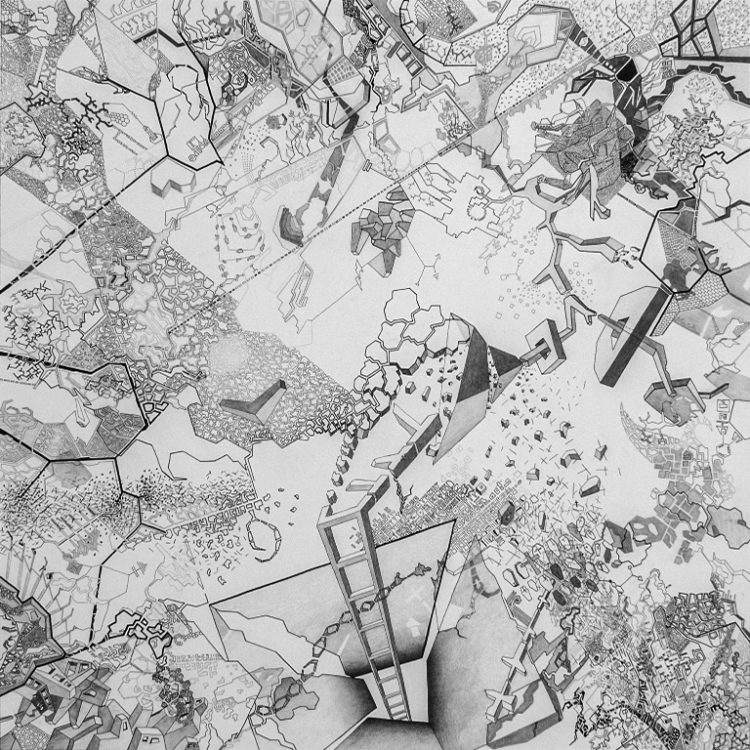

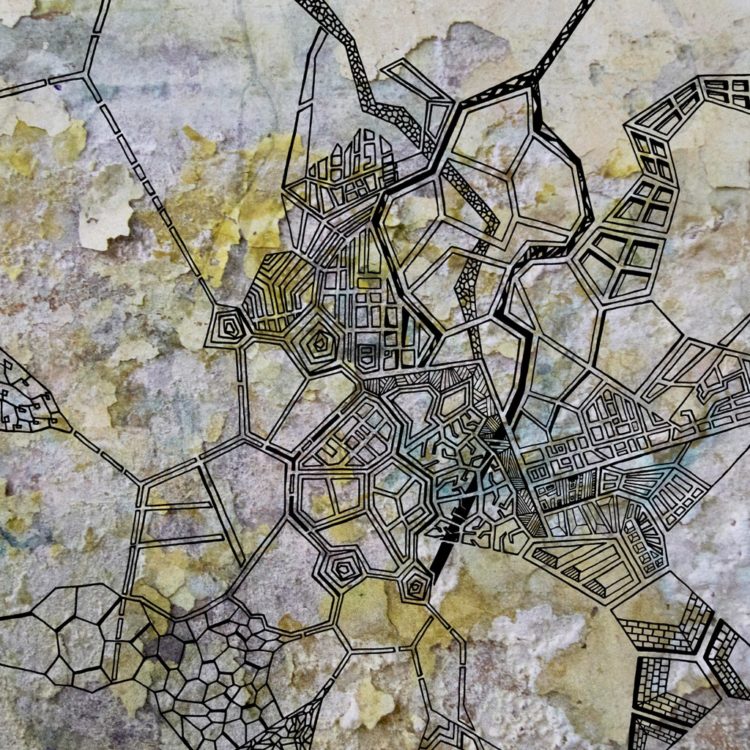
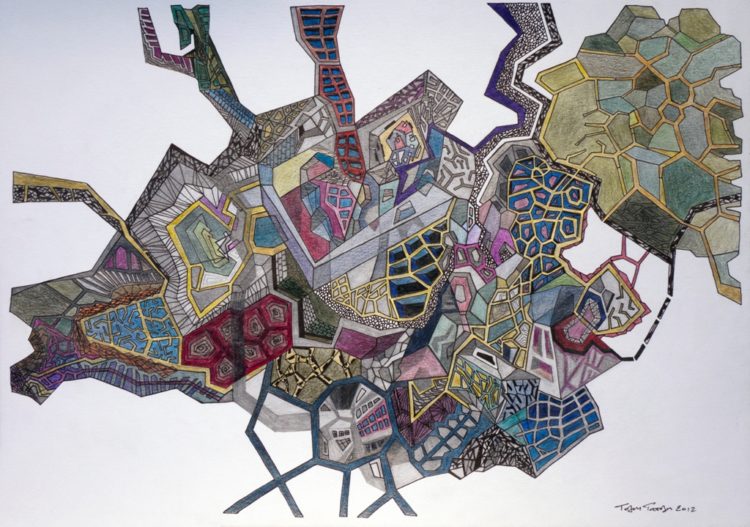
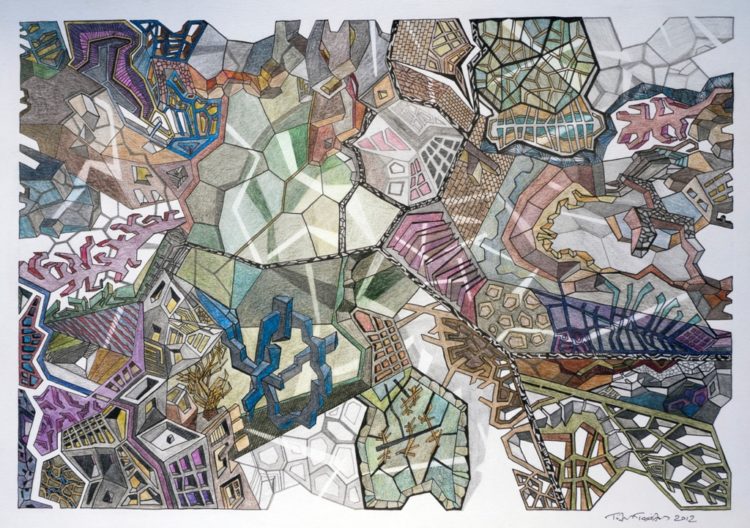
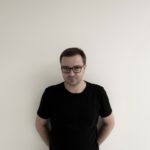
Description of works
01-04
Works from the project Light and Tranformations
While exploring the mental, perhaps even spiritual effects of light, color and form, architectural details can be converted into abstract rhythmic and harmonic structures through the concept of relating art with various depictions of morphologies of biological structures or representations of analysis on them. In the first two works, c-type photographs of dramatic close ups of architectural lighting designed also by the artist, were cut off into equally sized square parts and then recomposed and connected with staples within a frame of reference in DNA sequencing. In the other two, using as “substrates” inkjet prints of architectural lighting details once again, shot during electrical hardware installation, many layers of cells are created by ink. The lines intersect in a way of modifying a cell tissue-e.g., epithelium, that is embodied in the printed image.
05-06
Works from the project Marlene Dietrich
In this project, the portrait of Marlene Dietrich has been used as a starting point of a series of numerous works created with the technique of engraving on linoleum. The way that the portrait has been approached and processed resulted prints that look very similar to medical imaging-i.e., x-ray, ct scan, used in diagnostics. This methodology, which is based on an analytical temperament, allows the viewer to dive into the inner world, literally and figuratively, of this legend.
07-12
Works from the project Fragments of Dystopia
These works are related to fictional representations of intertemporal urban Dystopia. They aggregate fragments that depict socio-political, urban and cultural issues, and also structures of activity within the human habitat. A key tenet in these representations of elements of our decaying global community is a perceived relation between built environment and man. Urban fabric is seen here as an organism consisting of cells, tissues, organs and systems. Sometimes these works seem as layered “aerial x-rays”, creating a kind of urban palimpsests that encode information on urbanization. In this imaging/mapping of human geography these carcinoma-like Kafkaesque fields are composed by hybridizing many elements: buildings, urban plans, mechanical branches, biological structures, archaeological plans, computer hardware networks and lettering that ranges from ancient symbols to binary code.
Tolis Tatolas













